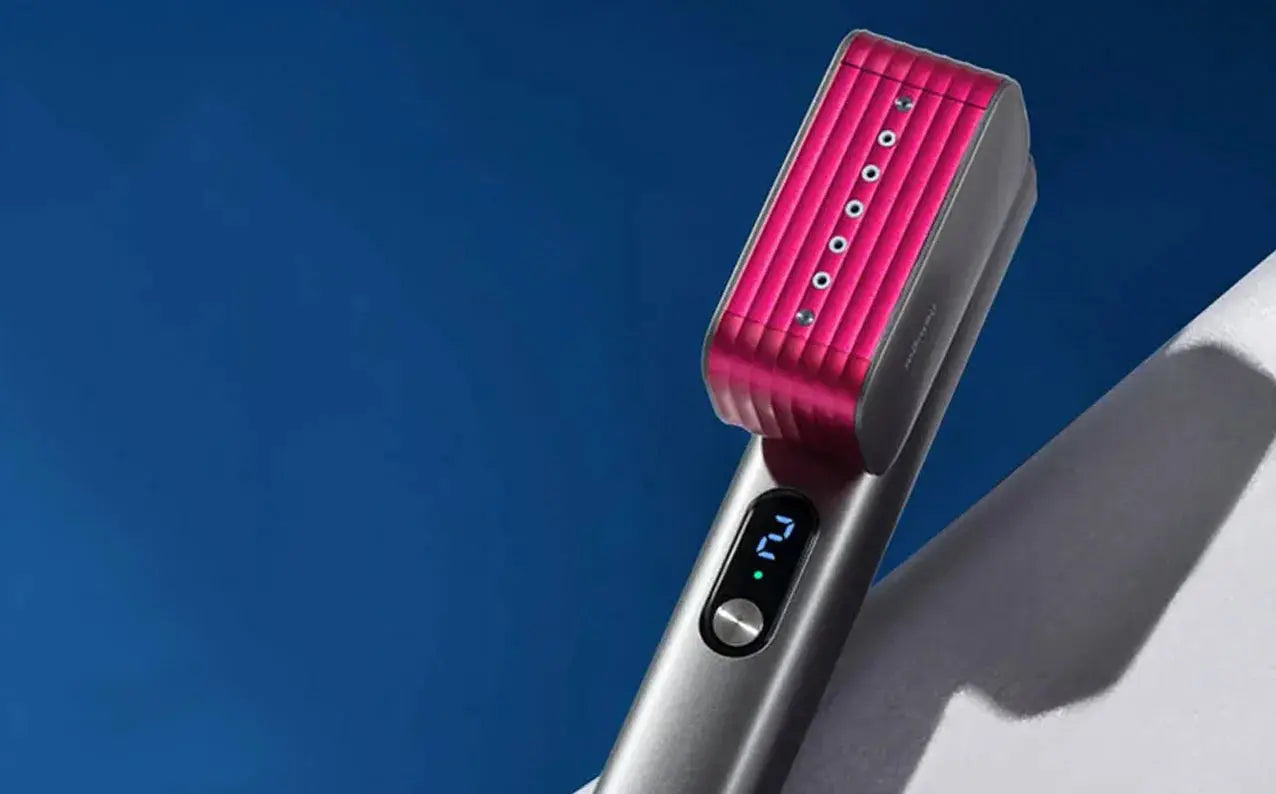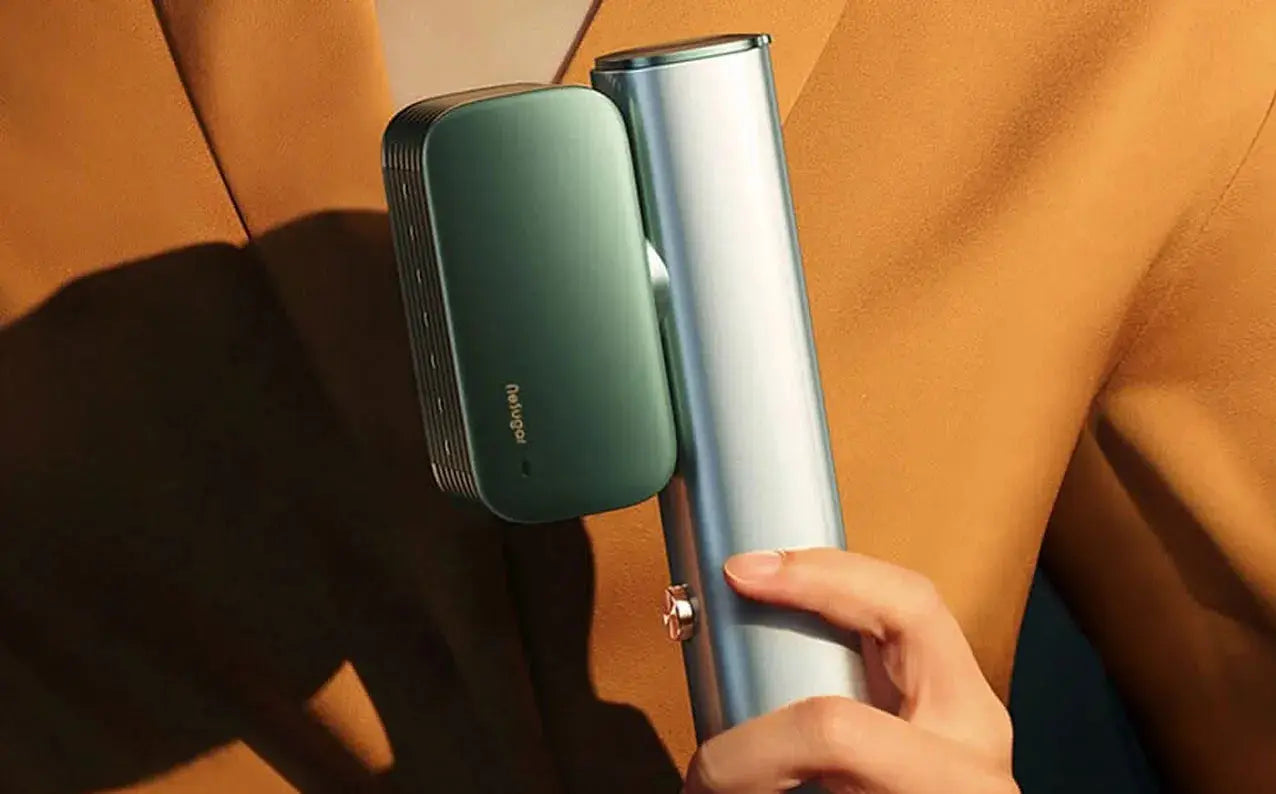Me and the Clothes Ironing Machine: From "Hasty Wrinkling" to "On-Site Reliability" - That Little Machine
As an event planner who constantly travels around various offline events, exhibitions and client sites, I have witnessed countless moments where "clothes ruined the entire scene": when the box was opened, the dress was pressed into knife-like creases; when entering the meeting room, the originally straight pant line twisted into a ball like after doing yoga. A few years ago, I started carrying a clothing steamer with me. This small device actually changed my confidence in handling unexpected situations.
It's not some fancy "magical filter", but it helps me get the details right at critical moments - and details often determine the first impression others have of your professionalism.
The night when I first "saved the day" with steam
Once at the Austin booth, I was so busy before the event that I stayed up until 2 a.m. The next morning, I had to give a presentation to the sponsor before the event began. I opened the carry-on, and the white shirt had deep creases from being pressed. The hotel's iron either had no water tank or the iron plate was crooked. My colleague handed me a handheld steam machine from her bag. She casually hung the shirt on the back of the door, preheated it for a few seconds, and then steamed it from the collar to the hem all at once. In less than two minutes, the wrinkles faded and the shirt became much straighter - when I walked into the presentation room, my panic eased right away. That moment truly made me understand: A steam machine that can be "used at any time" means so much redemption for professionals who often go out.
What exactly did the clothing steam machine help with? What could it do / couldn't it do
In brief, the steam machine works by using hot steam to loosen the fibers, thus removing wrinkles - unlike an iron which applies pressure, it is more "gentle" on delicate fabrics such as silk, lace, and wool. For clothes that need "natural rebound", the steam effect is excellent; but if you want those "cut-like straight" pleats (such as for formal shirts or dress pants that are extremely pressed flat), an iron is still more suitable.
Key points for purchase: Don't be fooled by fancy parameters (I have tested many of them personally)
Years of experience have taught me that focusing on the following aspects will help you purchase a truly "useful" model:
Steam flow rate (g/min) - This is a crucial indicator. The steam flow rate determines the speed and stability of wrinkle removal. Household and travel machines usually operate within the range of 15 - 40 g/min; if you frequently deal with heavy coats or large amounts of clothing, the target should be ≥ 25 g/min. Some professional floor models can reach above 30 g/min, providing more powerful operation.
heat-up time - I often decide what to wear just before going out. The fewer preheating seconds, the more ample the rescue time. Some models can reach an operational state in around 15 seconds, which is truly emergency-ready. There is a significant difference in preheating speed among different models. For the travel-ready models, I will set "15-30 seconds" as a strict requirement.
tank size - Travel models are lightweight, while home models need to have a larger capacity. The travel model has a capacity of 150-200ml. I think this is a balanced option, capable of handling 2-3 items. For home use, you can choose models with a capacity of 250-300ml or more. Adding less water makes it more convenient.
Voltage Compatibility - If you often travel, don't forget to confirm that it supports 100-240V. Otherwise, you'll have to bring a transformer, which will add more inconvenience.
Safety and Comfort - Automatic power-off, Overheat Protection, a convenient handle and buttons, as well as the control logic of releasing steam upon pressing and stopping upon releasing - all these are small but appreciated design elements that you will appreciate when using it for a long time.
My buying focus and disclaimer
When I shop for one, I focus on three things: steady steam output, a fast heat-up time, and how easy it is to carry. A travel unit I use heats up noticeably faster than many others I tried. I'm not endorsing any brand — just sharing what worked for me after trying several models. (To be clear: this is my personal take after testing a few options.)
Practical Operation: The steam treatment process I commonly use on-site (one-step version)
Below is the five-step routine I follow on-site — quick to repeat and practical under pressure.
Hang up the clothes: Use a sturdy hanger to secure them. Either the back of the door or a hanging rod can be used. Keep them hanging naturally and loosely.
Preheat until the steam is steady; if it sputters you'll get drips, so wait a few more seconds.
Support and flatten: With the other hand, gently pull the edge of the fabric (or wear heat-resistant gloves) to give the fabric some tension.
Work top to bottom — neckline, shoulders, sleeves, body, then hem — keeping about 1–3 inches away (roughly 2.5–7.5 cm). For delicate silks, give a bit less distance.
Air-drying and setting: After steaming, let the clothes rest for 30 to 60 seconds before wearing or storing, giving the fibers time to cool and set.
After a few tries I can have most pieces ready in one to two minutes; you get faster with practice. When time is tight, consistent steam generally works better than frantic scrubbing.
Fabric Overview: Quick fabric notes — what I reach for when time is tight, and what I treat more gently
Silk / Lace / Lightweight chiffon: Use a low-steam setting and sweep from a distance. Try it on from the inside first; avoid staying for too long.
Wool / Cashmere / Tweed: Keep the keep the fibers straight, align with the brush head of the cloth, and gently brush multiple times for a more reliable result.
Cotton and linen (shirts / suits): Medium to high steam setting. For stubborn wrinkles, pass through both the inside and outside; for a "tightly pressed" effect, use the iron to press out the wrinkles locally at the end.
Embroidery / Beads / Appliques: Try to avoid exposing the front side to high temperatures. Instead, place a piece of cloth behind them or use it to shield during the steaming process to prevent damage.
Materials not suitable for steaming: genuine leather, suede, and fabrics with heat-sensitive coatings (if in doubt, test in a small corner of the interior first).
Cleaning and Maintenance: Several Unbreakable Rules for Extending Machine Lifespan
Many people buy it and use it a few times before realizing that it doesn't work properly. The problem is usually due to scale buildup or clogged nozzles. My maintenance process is simple and can be replicated:
Using distilled water or pure water: Hard water will quickly form scale inside the machine, while distilled water can significantly reduce the rate of scale formation.
clean it about once a month, follow the instructions to pour an equal proportion (1:1) of white vinegar and water into the water tank. Run or soak for a short period of time, then rinse with clean water. This can dissolve the scale. Similar methods have also been recommended in real household tests and cleaning guides.
Empty the water tank after use and let it dry: To prevent the remaining water from causing odors or breeding bacteria.
Nozzle to avoid collision deformation: Deformation of the nozzle hole will affect the uniformity of atomization.
Follow the instructions to clean the special attachments: items such as the brush head and filter should be disassembled and washed or replaced as per the manufacturer's recommendations.
Travel and On-Site Packing Tips (My Ever-Useful Bag Essentials)
A spare small bottle of purified water (in case the water quality at the hotel is not good).
Storage bag: Safely store the steam engine, measuring cup, brush head and gloves together.
More clothes hangers + portable clothes clips: Convenient for hanging clothes on the door or temporary hanging rods.
Extension cord / travel adapter: Sometimes the power outlets are hard to find. Don't rely on luck.
These things have helped me pull off "quick fixes" at airports, hotels, and even in the car.
Common Mistakes and Traps (The Holes I Fell Into, Don't Follow My Example)
Too close to the fabric: Many people think that the closer they get, the faster it will dry. The result is water stains and "bright spots" appear. Keep to the recommended distance and let it dry slowly.
Horizontal rapid brushing: Horizontal force application is often more likely to leave streaks. Instead, try brushing slowly along the vertical direction of the garment.
Start without preheating: Condensation water will drip onto the fabric surface, making the wrinkles even more prominent. Wait until the steam is stable before beginning.
Adding fragrance or conditioner to the water tank: Don't do this. It will clog the nozzle and the maintenance cost will increase directly. Leave the fragrance for the fabric spray or perfume instead.
Last point: Transform "small tools" into "regular habits"
For me, the most valuable aspect of the steam iron is not how much it can remove wrinkles, but how it makes the act of "keeping oneself presentable" feasible. A few minutes of tidying up is not only an external care routine, but also a small ritual to prepare oneself mentally for going to work. When you enter the meeting room, you will be more focused because of that composure; and what others notice is often the "reliable impression" you give as a whole.






